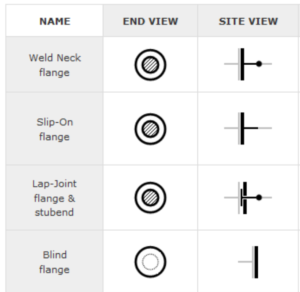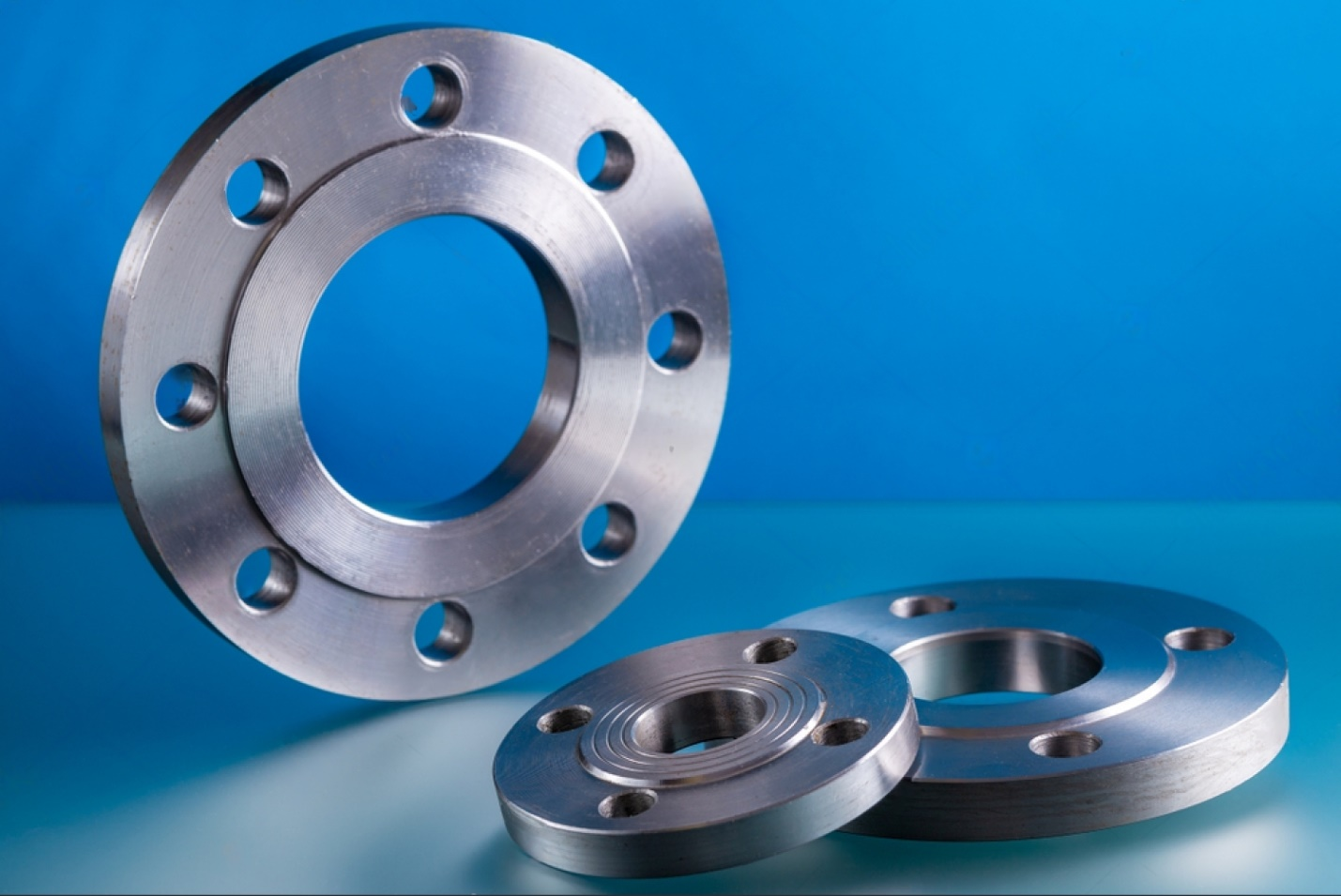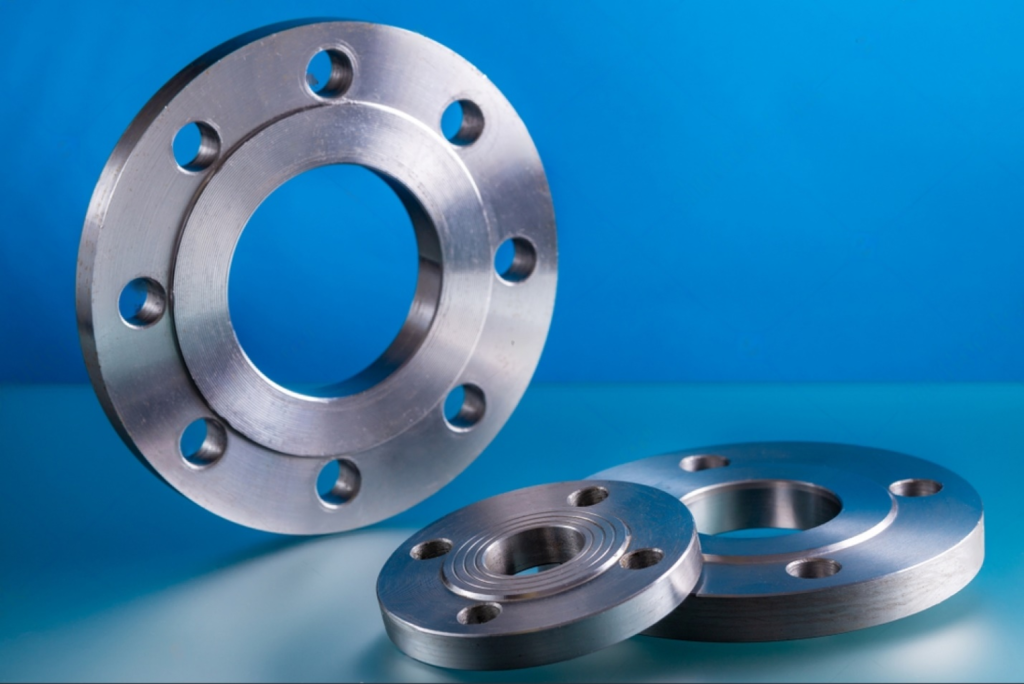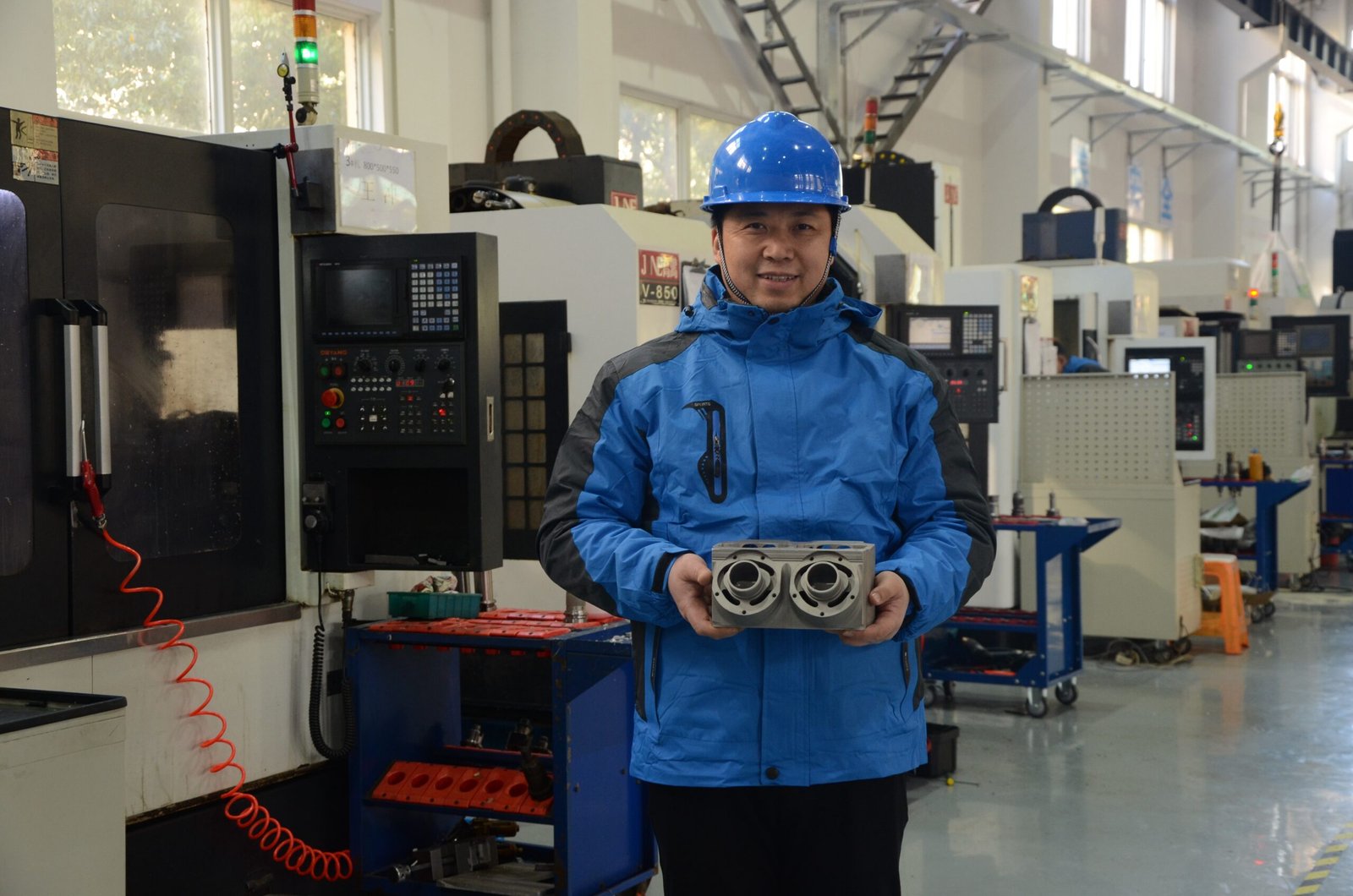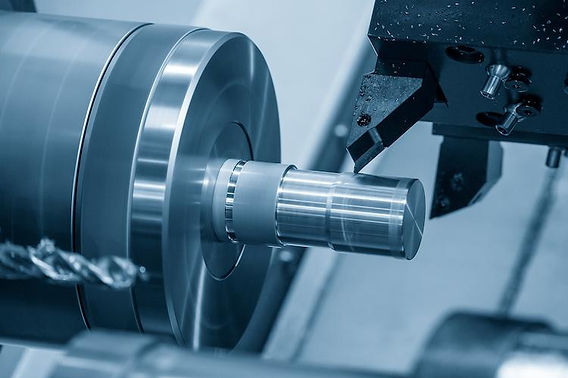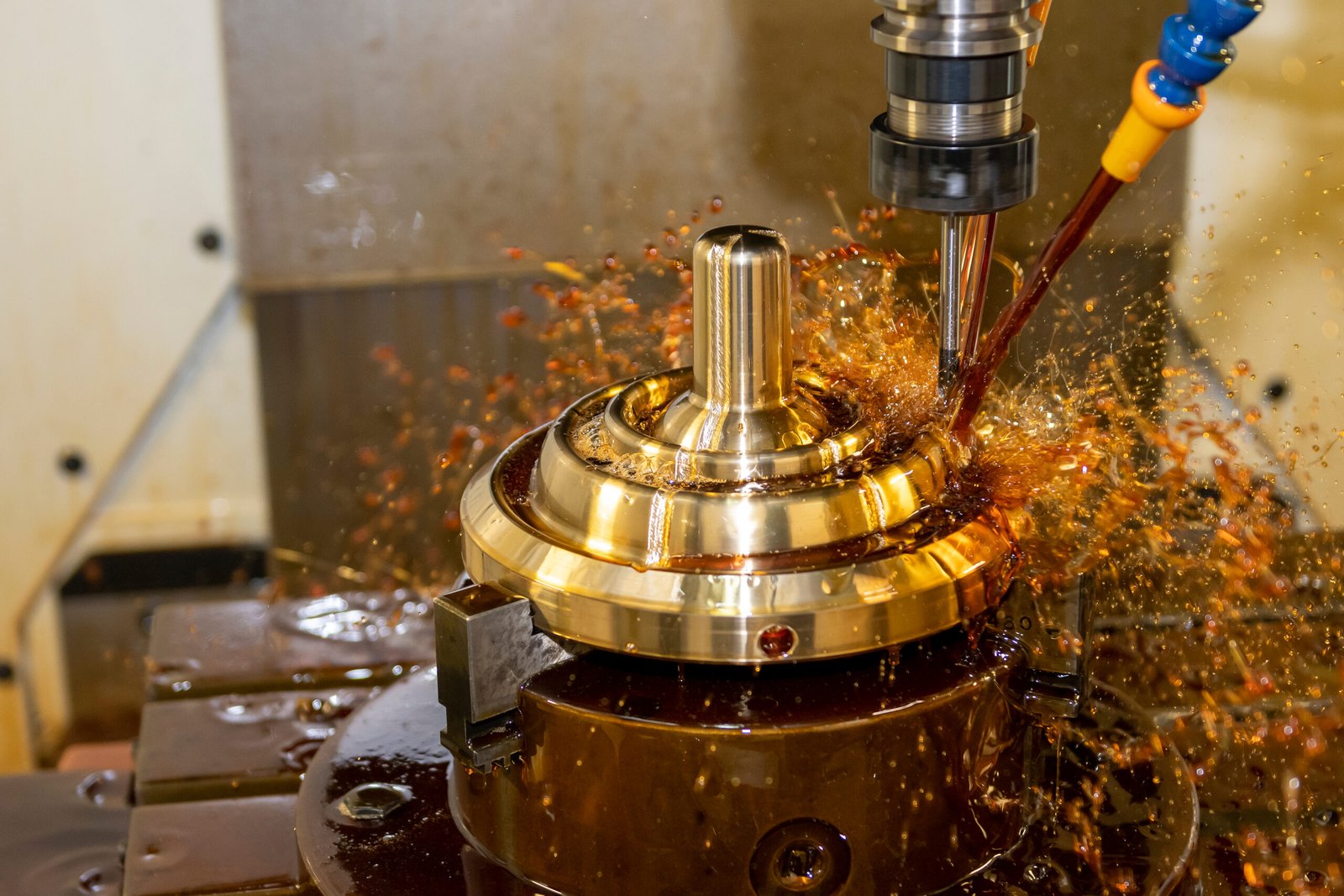What Are Flanges?
Flanges are among the most important parts of piping systems, which ensure a tight and reliable joining of pipes, valves, pumps, and other pieces of equipment. Their main application is to provide tight connections with easy access for maintenance, cleaning, inspection, or modifications of a system. Flanged joints are formed by bolting two flanges together with a gasket placed between them to provide tight sealing to prevent leakage.
Components of a Flanged Connection
A flange connection consists of three components:
- Pipe Flanges: These are major elements that connect piping systems and can be fabricated from different materials such as stainless steel, Monel, and Inconel, depending on the application.
- Gasket: The gasket sits in between flanges and ensures a leakage-proof seal. Material selection is very important; it has to be selected based on the piping components.
- Bolting: Bolts keep the flanges together and complete the connection. Like gaskets, bolts can also be made from approved materials compatible with the system.
With this design, piping systems have more flexibility because disassembly and access are easier.
Common Types of Flanges
Threaded Flanges
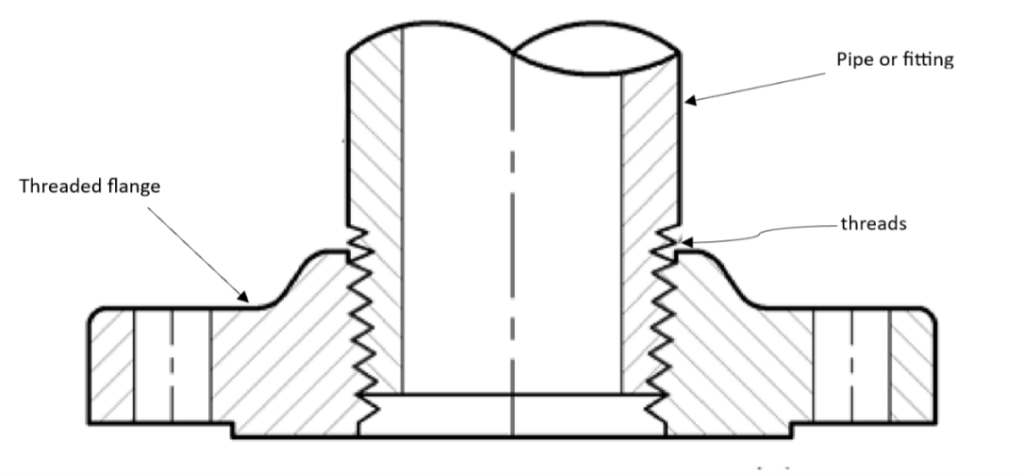
Threaded flanges are made with internal threads that engage the external threads of a pipe or fitting. The threads are tapered so that the tapers pull the flange and pipe together to create a seal as the tapers approach the same diameter. These types of flanges are normally used for low-pressure, noncyclic applications. They also find applications where welding operation is hazardous.
Threaded flanges present the advantage of attaching to the pipe without welding, which makes them much more convenient and adaptable to certain applications. In practice, a seal weld could be added to increase the integrity of the connection.
Threaded flanges are used more in smaller pipe sizes and are less common in larger systems. They necessitate a pipe with a thicker wall thickness due to threading since thinner pipes cannot be threaded properly. That makes them unsuitable for thin-walled piping systems but very effective in applications requiring robust and straightforward connections.
Welding Neck Flange
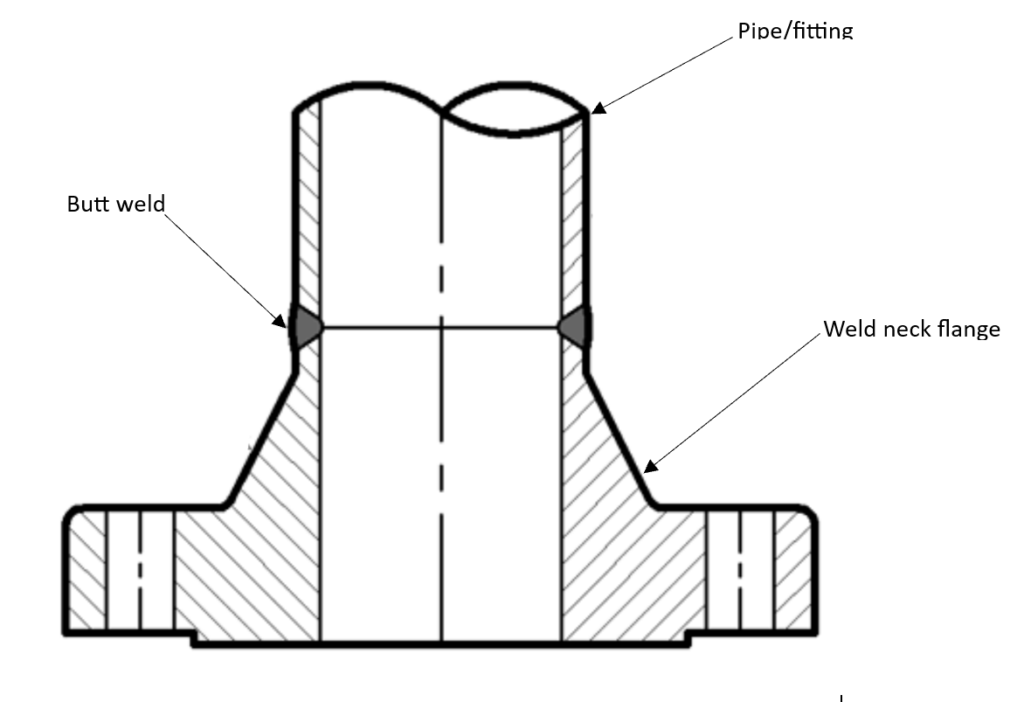
The welding neck flanges are specially designed with a long, tapered hub for a smooth transition to the wall thickness of the attaching pipe or fitting. The gradual taper at the weld connection reduces turbulence and limits erosion at the joint. They are bored to match the inside diameter of the mating pipe, precluding flow restrictions beyond those found in the regular straight pipe; thus, this type is especially applicable for critical applications where product integrity is an issue.
Known for the ability to withstand severe service conditions, Welding Neck Flanges serve well in high pressure, sub-zero temperatures, or high heat. The tapered hub is highly reinforcing and designed for good stress distribution. This, as a result, turns into extra strength and reliability. Besides, a full-penetration V-shaped butt weld provides strong and leakage-proof joints. They can find highly useful applications in industries where safety and performance come first.
Welding Neck Flanges are also readily radiographed, which offers effective flaw detection during inspection. This makes them preferred choices in demanding industrial applications requiring long-term reliability.
Slip On Flange
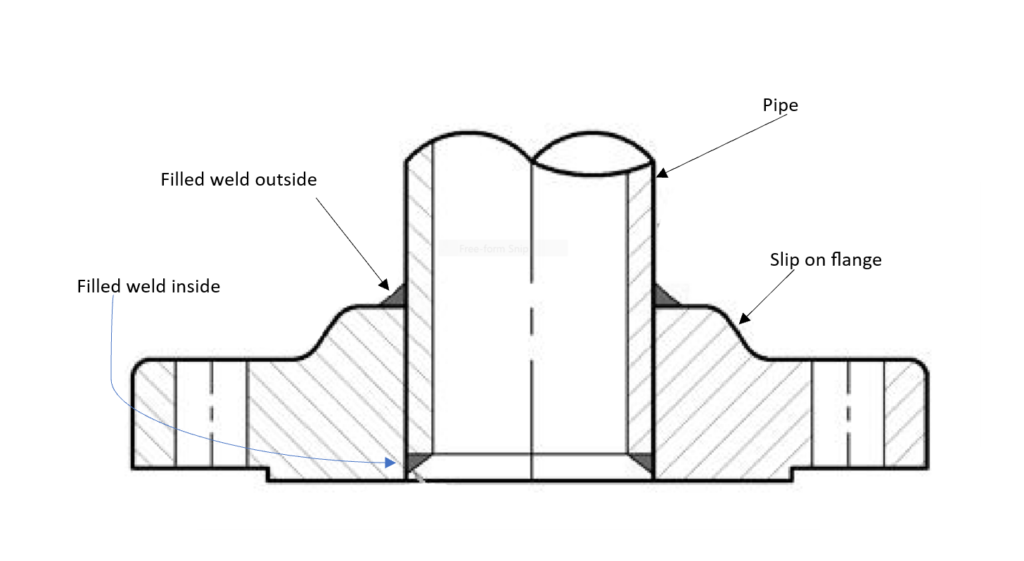
The Slip-on flanges are designed to slip over the outer diameter of the pipe and are welded using fillet welds both at the hub and at the pipe's end inside the flange. Because of the low hub height and attachment, they are not suitable for high-stress applications. They have about two-thirds of the strength under internal pressure compared to welding neck flanges and about one-third the fatigue resistance, so these flanges are better used in lower-stress situations.
One major limitation is that a pipe has to be welded first to the flange before attaching to a fitting because, in the case of fittings like elbows and tees, these lack straight ends that can fully fit into the flange. This notwithstanding, slip-on flanges are still highly rated for systems where speedy installation and cost-effectiveness are in play. For optimum performance, good welding practices should be ensured, and they must be used in applications whose strength and fatigue characteristics can match.
Socket Weld Flange
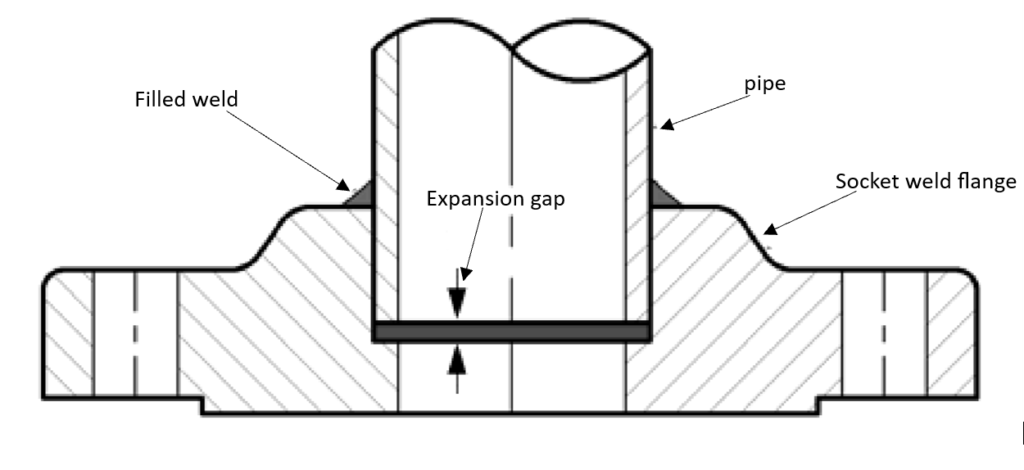
A socket weld flange is similar to a slip-on flange but has a bore diameter equal to the diameter of the pipe and a counterbore on the hub side slightly larger than the outer diameter of the pipe. This counterbore provides a "socket" into which the pipe end is inserted for a tight fit. The connection is secured by a single fillet weld at the outside hub of the flange. A shoulder, created by the difference between the bore and counterbore, which corresponds to the pipe wall thickness for an obstruction-free product flow through the connection.
Originally designed for small-diameter, high-pressure piping, socket weld flanges have proven to be most satisfactory in chemical processing, hydraulic systems, and steam distribution lines. With static strengths equal to slip-on flanges, the fatigue strength of socket weld flanges is 50% greater than double-welded slip-on flanges in dynamic applications.
A small expansion gap, or bottoming clearance, must be provided between the pipe and flange before welding. This reduces residual stresses at the root of the weld due to metal solidification, improving the long-term reliability of this type of connection. It is particularly well suited for high-pressure applications where high reliability, smooth product flow, and good fatigue resistance are important. For optimal performance, installation practices should adhere to proper guidelines, including specified bottoming clearance at welding.
Lap Joint Flange
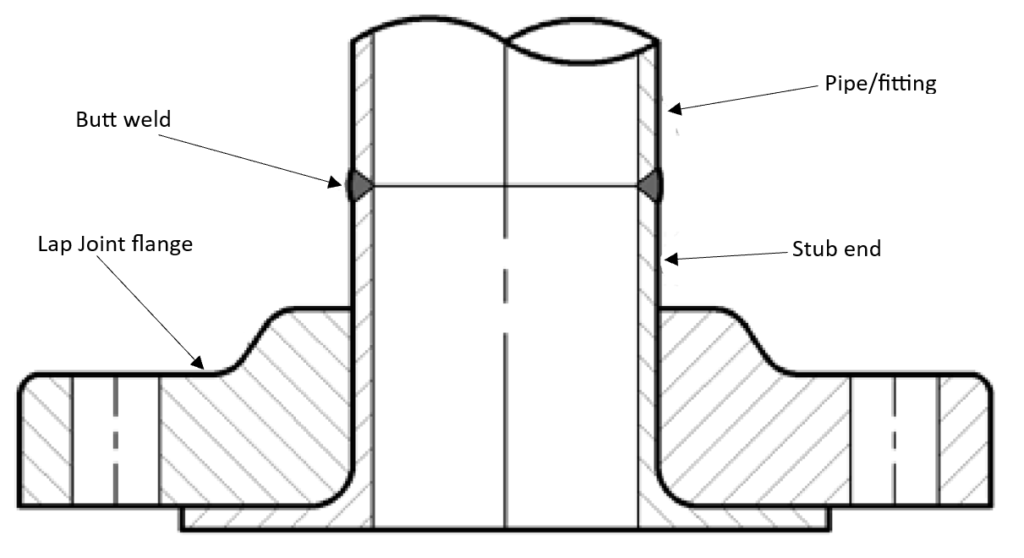
Lap Joint flanges are always used with a "Lap Joint Stub End" and they have the same dimensions as any other flange type but without a raised face. They are similar to slip-on flanges but have a radius at the intersection of the flange face and bore to accommodate the flanged portion of the stub end. These flanges slip over the pipe and are not welded or otherwise secured directly to it.
Bolting pressure is transmitted to the back of the stub end by the contact of the flange, which provides a very reliable gasket seal. They possess a pressure-holding ability as good as slip-on flanges, but only one-tenth the fatigue life of welding neck flanges. Nevertheless, they are suitable for all pressure levels and come in a wide size range.
Lap joint flanges should be used for systems that are subject to frequent dismantling or where the stub end may be freely rotated for lining up during assembly.
Stub End
Stub Ends always are used in pairs with Lap Joint flanges as backing flanges in low-pressure non-critical applications. This flanging method is relatively economical, especially in systems like stainless steel piping, where carbon steel flanges are permitted without coming into contact with the contents of the pipe. Stub Ends give an effective and economic answer to various industrial requirements.
Blind Flange
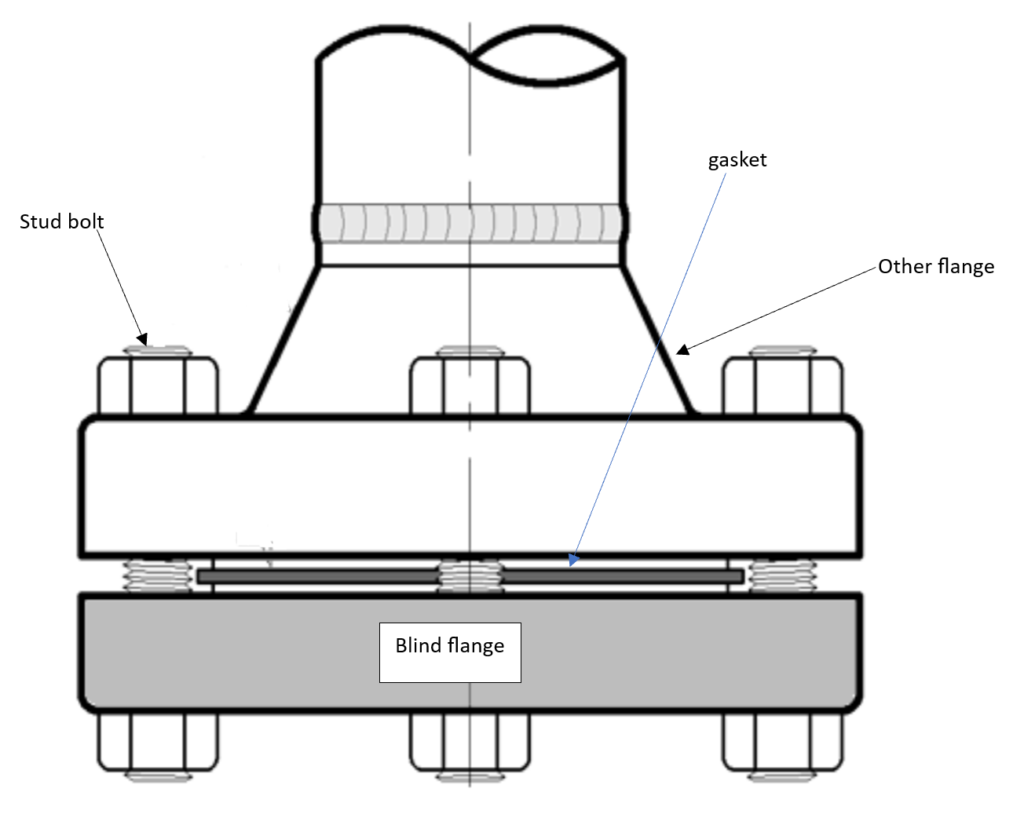
Blind flanges are made without a bore and are machined to seal the ends of pipes, valves, or openings in pressure vessels. They could be supplied with or without a hub, depending on the need. These flanges are designed for high stresses, especially under pressure and bolt loading, making them one of the most highly stressed flange types, especially in larger sizes. However, the maximum stresses are those due to bending at the center which can easily be absorbed by the flange.
Flange Facing Type
Flange faces are important to establish a good seal in piping systems. The following faces are defined by ASME B16.5 and B16.47: raised face, large male and female facings, large and small tongue-and-groove facings, and ring joint facings for metal gaskets. The type of face affects the choice of gasket and influences both the performance and life of the seal.
RAISED FACE (RF)
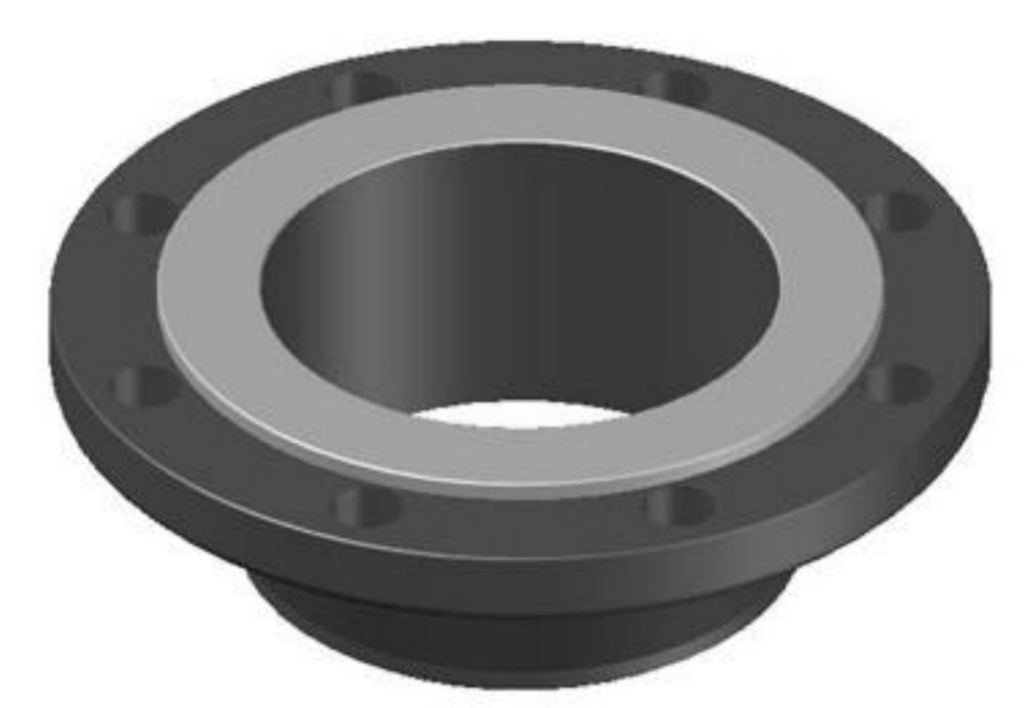
The Raised Face (RF) flange is the most common flange type employed for process plant applications. It can be identified by the gasket surface raised above the bolting circle face. This feature provides an added advantage in concentrating the pressure on a smaller area of the gasket, consequently increasing the pressure containment ability of the joint. RF flanges accept flat ring sheets and metallic composites including, but not limited to, both spiral wound and double jacketed types. Their versatility and efficiency make them a first-rate selection for high-performance sealing in any industrial piping system.
FLAT FACE (FF)
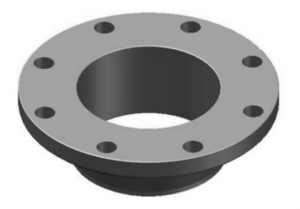
The flat face (FF) flange has a gasket surface that is level with the bolting circle face. This type of flange is well suited to applications where mating flanges or fittings are cast. Flat face flanges shall never be bolted to raised face flanges to ensure compatibility and joint integrity in specific industrial applications.
RING-TYPE JOINT (RTJ)
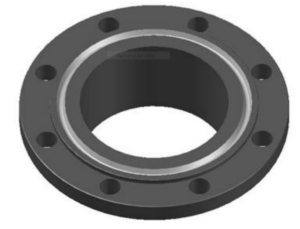
The RTJ flange is used for the most severe applications such as high-pressure gas transmission pipelines and very high-temperature services over 800°F (427°C). The faces of these flanges are grooved to accept steel ring gaskets. When the bolts are tightened, the gasket is compressed into the grooves and elastically deforms to make a good metal-to-metal seal.
Tongue and Groove (T&G) and Male & Female (M&F)
Tongue and Groove (T&G) flanges They have mating grooves with raised portions, making alignments easier for installations and forming a reservoir for gasket adhesive.
Male & Female (M&F) flanges, of like design, retain the gasket within the female face, providing both correct positioning and compatibility with many gasket materials. Both types of flanges are reliable sealing solutions that may be widely applied wherever the correct positioning of a gasket and an exceptional level of performance is demanded.
Flange Dimensions and Specifications
Flange dimensions and specifications are very critical in the design, maintenance, or upgrade of a piping system. Proper sizing ensures a perfect interface between the flange, pipe, and gaskets. The key dimensions include:
- Outside Diameter: The distance between two opposing edges of the flange face.
- Thickness: The thickness of the outer attaching rim.
- Bolt Circle Diameter: Opposing bolt hole centers' distance
- Pipe Size: It corresponds to the designated pipe size.
- Nominal Bore Size: The internal diameter of the flange connector
Good dimensional considerations assure better flange application compatibility, reliability, and performance in various industries.
Drawing symbols for flanges
